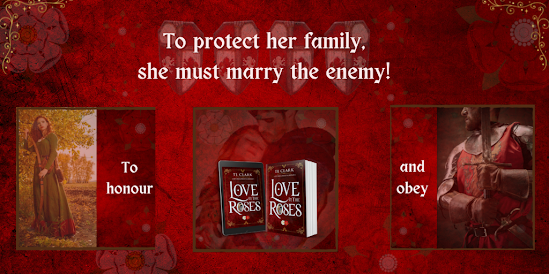Time
& Money
Time is money, as they say. So one shall look at both in the
same blog post.
Time
How did one tell the time in Medieval England? Hmm…it
depends which part of the Middle Ages we’re talking about, and to some extent,
where.
Now, this can get a bit complicated, so I’ll try to be
pretty basic here. After all, you’re probably not going to get too bogged down
by hours.
However, for centuries, we followed Canonical Hours – which
dictate prayer times. These were:
{
Vigil (eighth hour of night: 2 am)
{
Matins (a later portion of Vigil, from 3
am to dawn)
{
Lauds (dawn; approximately 5 am, but
varies seasonally)
{
Prime (early morning, the first hour of
daylight, approximately 6 am; added during the 12th century)
{
Terce (third hour, 9 am)
{
Sext (sixth hour, noon)
{
Nones (ninth hour, 3 pm)
{
Vespers (sunset, approximately 6 pm)
{
Compline (end of the day before retiring,
approximately 7 pm)
The three major
hours were Matins, Lauds and Vespers.
The minor hours Terce, Sext, None and Compline.
Church bells would be rung to call the (seven or eight) hours.
This was strictly regulated; woe betide any who rung bells outside the rules!
They were also rung for celebrations, coronations, curfews, festivals, funerals,
market openings, Sunday functions and weddings.
The breviary was created; a liturgical book for praying the
canonical hours.
What did all
this mean?
Essentially, people got up at the crack of dawn to pray
(eurgh!). After which, the rich folk would have a little (white) bread and
(red) wine for breakfast – still not compensation for such an early start in
this author’s humble opinion.
They did not
generally have clocks. Although, some towns were starting to get fancy
astronomical clocks (oooh!).
i.e. They wouldn’t ask their friends to come round to their
place at two o’clock.
NB There were no minutes in the hours for most of the
medieval era. The length of hours varied according to the amount of light.
e.g. in 12th century London, Matins (first
light) was rung at: 5am at the equinox, 6.40 am during midwinter but 2.30am at midsummer.
Similarly, vespers (last light), was rung at: 5pm at
the equinox, 3pm during midwinter but 7pm at midsummer.
It wasn’t until the 14th century that clocks,
measuring equal hours, started to appear.
There were, of course, sundials. Apparently, some peasants
even had them on the bottom of their shoes! They’d take the shoes off, face the
sun and see where the shadow of the heel fell; clever! Sundials remained a
stalwart of time-telling until watches, really. They are amazingly accurate,
after all.
Ergo, one could not actually time cost you money in the
Middle Ages (despite my tongie-in-cheek opening paragraph). Merchants were not
able to charge fees on unpaid debt as that was akin to charging interest, which
was illegal for most of the era. Time belonged to God!
Carrying on from ponderings on time, I venture that when
entertaining, guests would come to “dinner” at the midday/noon meal. People
would have to travel long distances down poor roads without lighting.
Therefore, it’s reasonable to assume they’d do so when there was daylight.
Calendar
When writing of Medieval England, don’t forget they were
using the Julian calendar. The Gregorian calendar clattered into our lives in
1582.
The Julian calendar used the sun (noon) as the starting
point. Leap years were 366 days; originally, 6 months of 30 days, 6 months of 31
days.
February was the last month of the year; 29 days in leap
years, 28 in others. The 1 day taken from February was added to August.
The specific method applied, created a 1 day shist every 128
years.
There is a handy site to find the day of the week for any
date: https://www.dayoftheweek.org/
And a dates converter (which I used to calculate Easter for
1484): http://www.medievalgenealogy.org.uk/cal/medcal.shtml
And if you want a Julian date converter, I found: https://www.typecalendar.com/julian-date
Money
During my research, I came across this handy currency
converter. You can select which year, and it will tell you the equivalent worth
of modern currency: https://www.nationalarchives.gov.uk/currency-converter/
Standard coins in use in the 15th century:
{
Groat (four pence)
{
Half groat
{
Half penny
{
Farthing (one quarter of a penny)
Units used in accounting but not actual coins:
{
Pound (two hundred and forty pence/20s)
{
Mark (one hundred and sixty pence/two thirds of
a pound/13s 4d)
{
Shilling (twelve pence)
l, s, d = pounds, shillings and pence (Latin = liber,
solidus and the Roman denarius, hence the abbreviations).
The
gold noble; before 1464 was valued at 6s 8d. However, after that, it became the
rose-noble or ryal and was valued at 10s.
At
the same time, the gold coin the angel was issued, valued at 6s 8d.
Later,
Henry VII created a gold coin in 1489; the first sovereign, valued at 20s.
A
few other coins appeared under different rulers, but I don’t want to
over-complicate things.
Coins
were hammered, therefore had a rough appearance. Milled/machine-made (smooth)
coins didn’t appear until the 17th century.
So, what would all this
buy you?

Part of my research looked at the wonderful book, “Medieval Gentlewoman” by Ffiona Swabey. In it, she explores the household accounts of Alice de Byrne (1360-1435). A fairly humble landowner; middle class, if you will.
In alignment with the 1388 Ordinance of Labourers, she paid her staff:
{ Bailiff – 20s (also received a 6s 8d bonus
in the form of clothes allowance and faggots, as in bundles of wood)
{
Carter
– 10s
{
Oxherd
and cowherd – 6s 8d
{
Plough
drivers – 7s
{
Swineherds
and female labourers – 6s
{
Maidservant
– 8s
Generally, a labourer may earn around £2 per year/2 pence per day. Carpenters could earn 4 pence per day. A knight could receive 4 shillings per day (48 pence/£73 per year) – presumably the non-landed kind . Whilst barons raked in £600 per year.
Livery
Alice gave x24 householders eight yards of green cloth at just under 1s per yard. Lesser servants were given lesser amounts. But the total came to £8 for summer livery. But she once paid £36 for the annual livery.
General Purchases
(a rough guide):
{
Rent; merchant’s house – L33-66 per year
{
Knight’s armour (complete) – L16 6s 8d
{
Gown (fashionable lady’s) - L10
{
Ready-made armour (probably from Milan) - L8 6s
8d
{
Mail – 100s
{
A book – L1
{
6 silver spoons – 14s
{
Gold brooch – 13s
{
An ox – 13s
{
Saffron – 12s per lb
{
A cow – 10s
{
Gold ring – 7s
{
Rent; cottage – 5s per year
{
Tunic – 5s
{
80 lbs cheese – 3s 4d
{
Spices – 1-3s per lb
{
A sheep – 1s
{
Linen – 1s
{
Wine (good) – 8d per gallon (1 gallon is 8 pints/4.5
litres)
{
Hat (posh) – 10d
{
Pair of gloves – 7d
{
Candles (wax) – 6.5d
{
A goose – 6d
{
Sword (poor) – 6d
{
Shoes (posh) – 4d
{
Candles (tallow) – 1.5d
{
Ale – 1d per gallon
{ A lamb – 1d
{
2 chickens – 1d
{
A dozen eggs – ha’penny
Almost half of one’s annual income may have been spent on maintaining
the household (food, wages, livery).
Always in love and
light,
TL
------------------------------------------------------------------------------------
My book, Love in the Roses is available for pre-order (click here).
To protect her family, she must marry
the enemy!
The fictitious tale of a knight’s
daughter, living life as it very well may have been in 1484.
------------------------------------------------------------------------------------

.png)



.png)

.png)

.png)

.png)

.png)



.png)




















